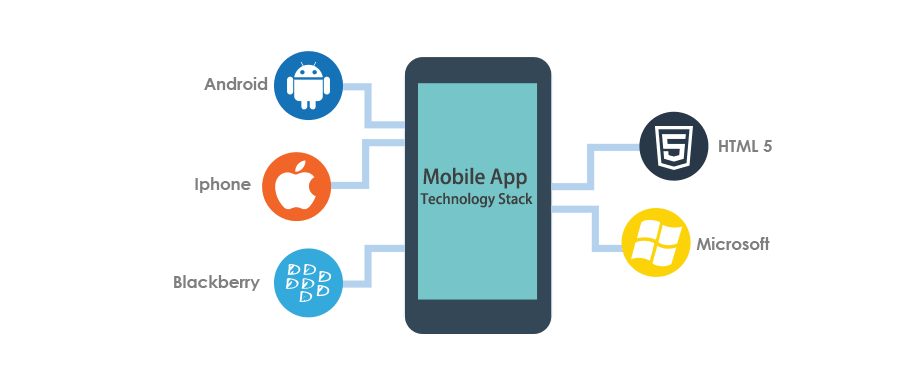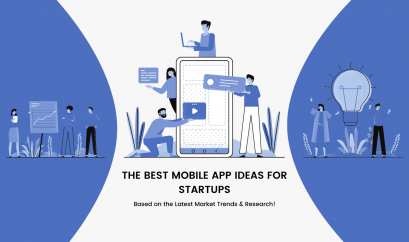Choosing the Right Technology Stack for Mobile App Development

Android App Development
When it comes to developing a mobile app, one of the first and most important decisions you need to make is the Technology Stack that will be utilized. No matter what mobile app development process you follow, it would never turn rewarding and successful until you select the right tech stack. Through this blog post, we’ll take a look at what factors you should pay attention to while picking the right technology stack for mobile app development but first let’s get familiar with the concept of Technology Stack.
What is a Technology Stack?
In the simplest terms, a technology stack is a set of different technologies needed to enable the functionality, accessibility, and usability of a software or application. When it comes to mobile app development, the complete technology stack can be divided into four main areas:
- Front-end Development – the user interface through which users interact with the app
- Backend Development – the server that takes the input from the user and converts it into the output
- Development Platform – the place where technologies, tools, frameworks, and languages are used to design and develop the mobile application
- Additional Requirements – the components that affect the performance, security, and robustness of the mobile application.
Now that you understand what mobile app technology stack means, let’s take a sneak peek into the technology stacks that powers the development of robust, scalable and secure mobile apps.
Technology Stack for Native App Development
Technology Stack for Android App Development:
- Programming Languages: Java, Kotlin
- Development Environment: Android Studio, Eclipse
Technology stack for iOS App Development:
- Programming Languages: Swift, Objective C
- Integrated Development Environment (IDE): Apple Xcode, iOS SDK, JetBrains AppCode
Technology Stack for Hybrid App Development
Programming Languages: HTML5, CSS3 and JavaScript
- Native Container: Adobe PhoneGap, Apache Cordova, Sencha Touch 2, Ionic, Adobe Flex
Technology Stack for Cross-Platform App Development
- Programming Languages: JavaScript, TypeScript, C#
- Cross-platform Toolkits: Flutter, Xamarin, React Native, Xtend
How to Choose the Right Technology Stack for Your Mobile Application
An ideal technology stack not only layouts the foundation but also decides the future of your mobile app. Below are the factors that you should take into account when selecting the most suitable and cost-effective technology stack for your mobile app.
App Considerations:
Every app is different and so is its development process. When choosing a mobile development technology stack, consider things like the type and complexity of the app, the device/platform on which the app would function, the user experience you want to deliver and the network condition the app would run in.
Application Goals:
In addition to the type of application, your choice of tech stack is also affected by the main objective of your mobile application. For instance, Apps with heavy load processing should be developed using more robust frameworks and languages such as Java or .NET, while Apps that operate around quick, streamlined interactions are best developed using a technology like Node.js.
Skill Set of Your Development Team:
There are many frameworks and programming languages that deliver the same results but are quite different from each other in terms of features and functionalities. So if you’re confused between two identical tech stacks, always prefer to go with the one your mobile app development team is more comfortable with and knowledgeable about.
Technology’s Sponsor:
Another crucial thing to take into consideration is the parent company of the technology stack. Always pick the one that offers a great community support along with a detailed documentation. For example, Google, Microsoft, Joyent, and Adobe are far better than Facebook when it comes to providing better community support and documentation.
Time to Market:
Last but certainly not the least, the amount of time it takes to convert your idea into an app also affects your choice of mobile app tech stack. Calculate the estimated go to the market time of your app and consider using a language or framework with a plethora of ready-made solutions to speed up your mobile app development process.


